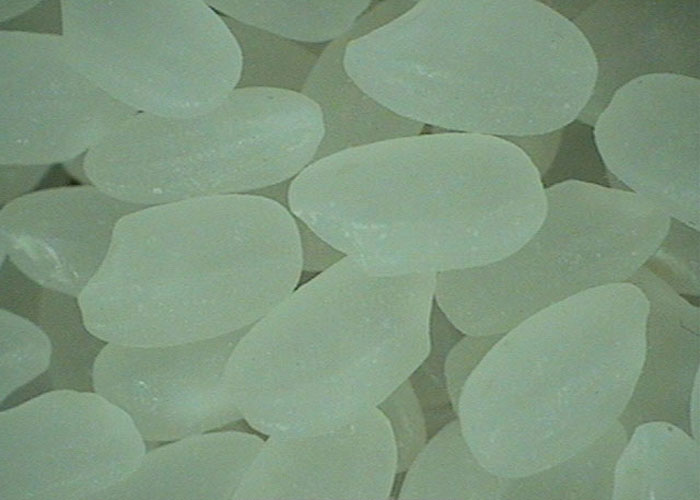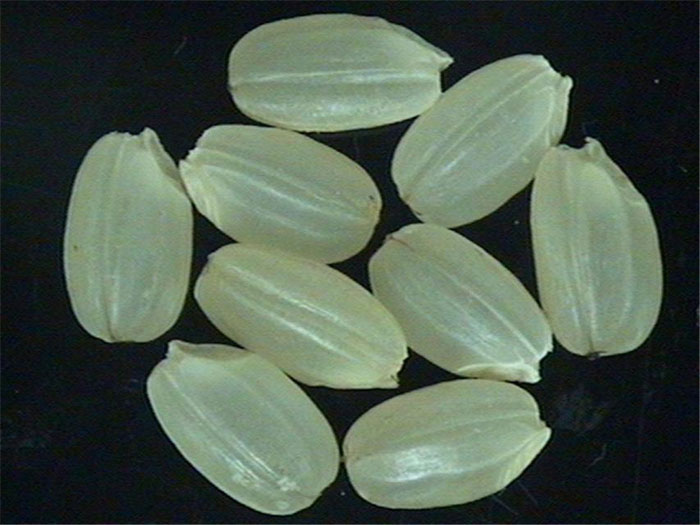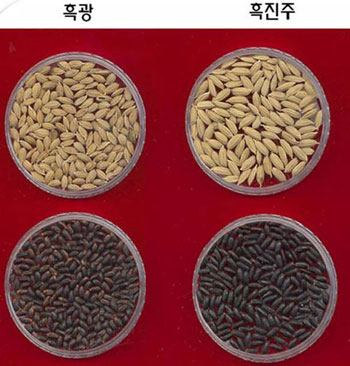In the past, many health-conscious people intentionally reduced their rice consumption to control their body weight. They don't have to do so anymore, however, due to newly-added health features that can be found in rice these days.
The Rural Development Administration (RDA) recently developed a range of new rice varieties that now have medicinal or health-oriented functions. The new rice varieties were developed with strengthened nutrients and can promote growth, can help lessen the results of aging, can treat some aspects of alcohol poisoning and can be good for people on a diet.


For families with children, take a closer look at the Haiami and Yeongan strains, as these varieties are especially designed to help kids as they grow. Haiami has a modified taste and contains higher levels of amino acids. Yeongan contains higher levels of lysine, a type of amino acid that can be found in animal protein. It helps produce cartilage and ligaments. The amino acid is especially important in many Asian diets that are grain-focused and which may feature less animal protein.
The Keunnun and Samkwang varieties are germinated brown rice and both help prevent some diseases. The embryo rice bud of Keunnun is three times larger than that of normal rice. Once it is processed into an edible form, it contains nine times more GABA, a neurotransmitter that can be found in the human brain or spinal cord. The Samkwang variety is resistant to blight, so it can be grown with fewer chemical inputs.
Some rice varieties have anti-aging effects. The black color of the Heugkwang, Heugjinju and Geonganghongmi varieties functions as an antioxidant. These varieties contain a high level of anthocyanin and dietary fiber, both good at preventing some diseases. Geonganghongmi contains a high level of antioxidative components and polyphenol, both of which help remove free oxygen radicals. Polyphenol helps humans to maintain their health and can help against some diseases. It also lowers cholesterol levels by prohibiting the absorption of cholesterol into the digestive tract.

The Milyang236 variety can help against some aspects of alcohol poisoning. It contains high levels of GABA, which help people to reduce the craving for alcohol and which can help nurse hangovers, the RDA claimed. It is also good against hypertension.
The Goami2 and Goami3 varieties were designed to help people maintain their diet. They contain three times more dietary fiber than ordinary rice, which makes people feel fuller and more satiated. Dietary fiber also helps people absorb sugar or neutral fat.
Other rice varieties have strengthened medicinal functions. Josaengheugchal helps remove Helicobacter pylori which causes gastritis. Red yeast rice raises the level of good cholesterol and reduces bad cholesterol in the human body. Nunkeunheugchal contains fat-soluble components such as gamma oryzanol, which can help against metabolic syndromes.
The RDA has been conducting its research alongside universities and hospitals in order to develop rice varieties with improved medicinal functions. The state rural development authorities said that it plans to develop 10 more rice varieties by 2017 which will be able to help treat modernity's lifestyle diseases.
By Yoon Sojung
Korea.net Staff Writer
Photos courtesy of RDA
arete@korea.kr
The Rural Development Administration (RDA) recently developed a range of new rice varieties that now have medicinal or health-oriented functions. The new rice varieties were developed with strengthened nutrients and can promote growth, can help lessen the results of aging, can treat some aspects of alcohol poisoning and can be good for people on a diet.

Haiami is one of the new varieties of rice developed by the RDA. It has a slightly modified taste, aimed at encouraging children to eat more and to grow faster.

Keunnun is a germinated variety of brown rice. It can help prevent some diseases.
For families with children, take a closer look at the Haiami and Yeongan strains, as these varieties are especially designed to help kids as they grow. Haiami has a modified taste and contains higher levels of amino acids. Yeongan contains higher levels of lysine, a type of amino acid that can be found in animal protein. It helps produce cartilage and ligaments. The amino acid is especially important in many Asian diets that are grain-focused and which may feature less animal protein.
The Keunnun and Samkwang varieties are germinated brown rice and both help prevent some diseases. The embryo rice bud of Keunnun is three times larger than that of normal rice. Once it is processed into an edible form, it contains nine times more GABA, a neurotransmitter that can be found in the human brain or spinal cord. The Samkwang variety is resistant to blight, so it can be grown with fewer chemical inputs.
Some rice varieties have anti-aging effects. The black color of the Heugkwang, Heugjinju and Geonganghongmi varieties functions as an antioxidant. These varieties contain a high level of anthocyanin and dietary fiber, both good at preventing some diseases. Geonganghongmi contains a high level of antioxidative components and polyphenol, both of which help remove free oxygen radicals. Polyphenol helps humans to maintain their health and can help against some diseases. It also lowers cholesterol levels by prohibiting the absorption of cholesterol into the digestive tract.

The Heugkwang (left) and Heugjinju varieties of rice have antioxidant functions which can help to slow some aspects of aging and may prevent some diseases.
The Milyang236 variety can help against some aspects of alcohol poisoning. It contains high levels of GABA, which help people to reduce the craving for alcohol and which can help nurse hangovers, the RDA claimed. It is also good against hypertension.
The Goami2 and Goami3 varieties were designed to help people maintain their diet. They contain three times more dietary fiber than ordinary rice, which makes people feel fuller and more satiated. Dietary fiber also helps people absorb sugar or neutral fat.
Other rice varieties have strengthened medicinal functions. Josaengheugchal helps remove Helicobacter pylori which causes gastritis. Red yeast rice raises the level of good cholesterol and reduces bad cholesterol in the human body. Nunkeunheugchal contains fat-soluble components such as gamma oryzanol, which can help against metabolic syndromes.
The RDA has been conducting its research alongside universities and hospitals in order to develop rice varieties with improved medicinal functions. The state rural development authorities said that it plans to develop 10 more rice varieties by 2017 which will be able to help treat modernity's lifestyle diseases.
By Yoon Sojung
Korea.net Staff Writer
Photos courtesy of RDA
arete@korea.kr
